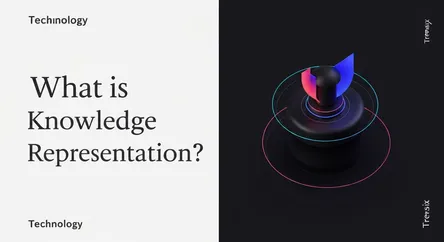Technology
What is Knowledge Representation?

Explore Knowledge Representation, the critical AI field for structuring information so machines can reason, learn, and solve complex problems.
What is it?
Knowledge Representation and Reasoning (KRR) is a field of artificial intelligence focused on how an AI can think about the world. It involves creating formal structures to store information in a way a computer can understand and use for complex tasks like problem-solving and making deductions. Instead of just raw data, KRR uses models like semantic networks, ontologies, and logical rules to capture objects, their properties, and the relationships between them. This structured knowledge forms the 'brain' that allows an AI to reason about what it knows.
Why is it trending?
As AI models like LLMs become more powerful, there's a growing need for them to be accurate, trustworthy, and explainable. Knowledge Representation is trending because it provides the framework for this. By integrating structured knowledge graphs, AI can ground its responses in verified facts, reducing errors or 'hallucinations'. This is crucial for enterprise applications where accuracy is paramount. It also powers semantic search and advanced reasoning, moving AI beyond pattern recognition to a deeper, more contextual understanding of information.
How does it affect people?
Knowledge Representation directly impacts daily digital life. It's the technology behind the informative panels in Google search results (Knowledge Graph), which answer your questions directly. It allows virtual assistants like Siri and Alexa to understand the relationships between concepts, like knowing Paris is the capital of France. In medicine, it helps AI systems analyze patient data to suggest diagnoses, and in e-commerce, it powers sophisticated recommendation engines that understand product attributes and user preferences, creating a more intelligent and helpful user experience.